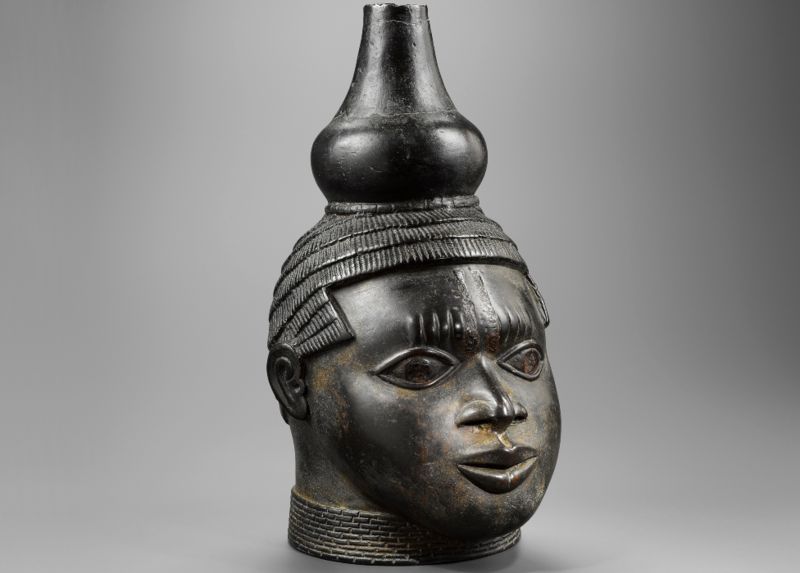In a vast forested territory southeast of present-day Nigeria, the Edo Kingdom, later called the Kingdom of Benin, arose during the 12th century. The magnificent bronze busts from Nigeria and Mali , which we exhibit in our room in Arrecife , are a significant example of the mastery in the domain of metallurgy and the refined aesthetic sense that this culture achieved during its heyday.

The sculptural legacy of the Edo culture
The Kingdom of Benin was born from the unification of the ethnic groups that had Edo as a common language, consolidating a monarchy under the power of the Oba. And, although the events after British colonization are well known, Edo history and culture is, even today, little known.
In the style of traditional Edo sculpture , facial features, such as the nose, eyes and lips, are depicted with exaggerated but graceful proportions. Used in religious ceremonies and rituals, the busts and masks present commemorative motifs, evoking important figures from their past.
The bronze busts of Nigeria and Mali are part of the legacy of the Edo people, who made the Benin bronzes between the 12th century and the 16th century . This constitutes a collection of more than a thousand pieces, mainly bronze, but also brass, ivory, ceramics and wood, from the royal palace of the Kingdom of Benin.
The beauty, ingenuity and sophisticated metallurgical technique seen in this collection is the most refined on the African continent and one of the most important in the ancient world . It has been so fascinating that, for many years, it generated disbelief in colonialist countries about its origin and the technique used in its manufacture.

An ancient technique that has reached our days
Called lost wax , this ancient and laborious technique is the same one that is used today in almost the entire African territory, and is that of our bronze busts from Nigeria and Mali , the latter highlighting their masks from the Dogon ethnic group.
When applying this technique, the artist sculpts the figure in a thin layer of beeswax, on a clay base. The wax is then covered with a new layer of clay that is left to dry in the sun or baked.
The wax is removed by melting during firing or left inside to be melted and displaced by molten metal, usually bronze or a bronze alloy, which is poured through special conduits. The entire process must be carried out with great delicacy and patience . The emptying is usually done starting with the face, for a better result.

Unique creations in bronze busts from Nigeria and Mali
Once the casting is complete, it is allowed to cool and is removed from the mold, continuing to carry out the finishes with a chisel and other tools. The fineness of the metal and the detail of the final result show the skill of the craftsman. In the process the mold is lost, so each creation is unique .
Of course, there is still much more to say about the sculpture of the ancient Kingdom of Benin. In Macassar we invite you to delve deeper into the Edo culture, getting up close and personal with the collection of bronze busts from Nigeria and Mali from our exhibition in Arrecife. You can contact us via WhatsApp or subscribe to our newsletter via email to receive more articles like this.

